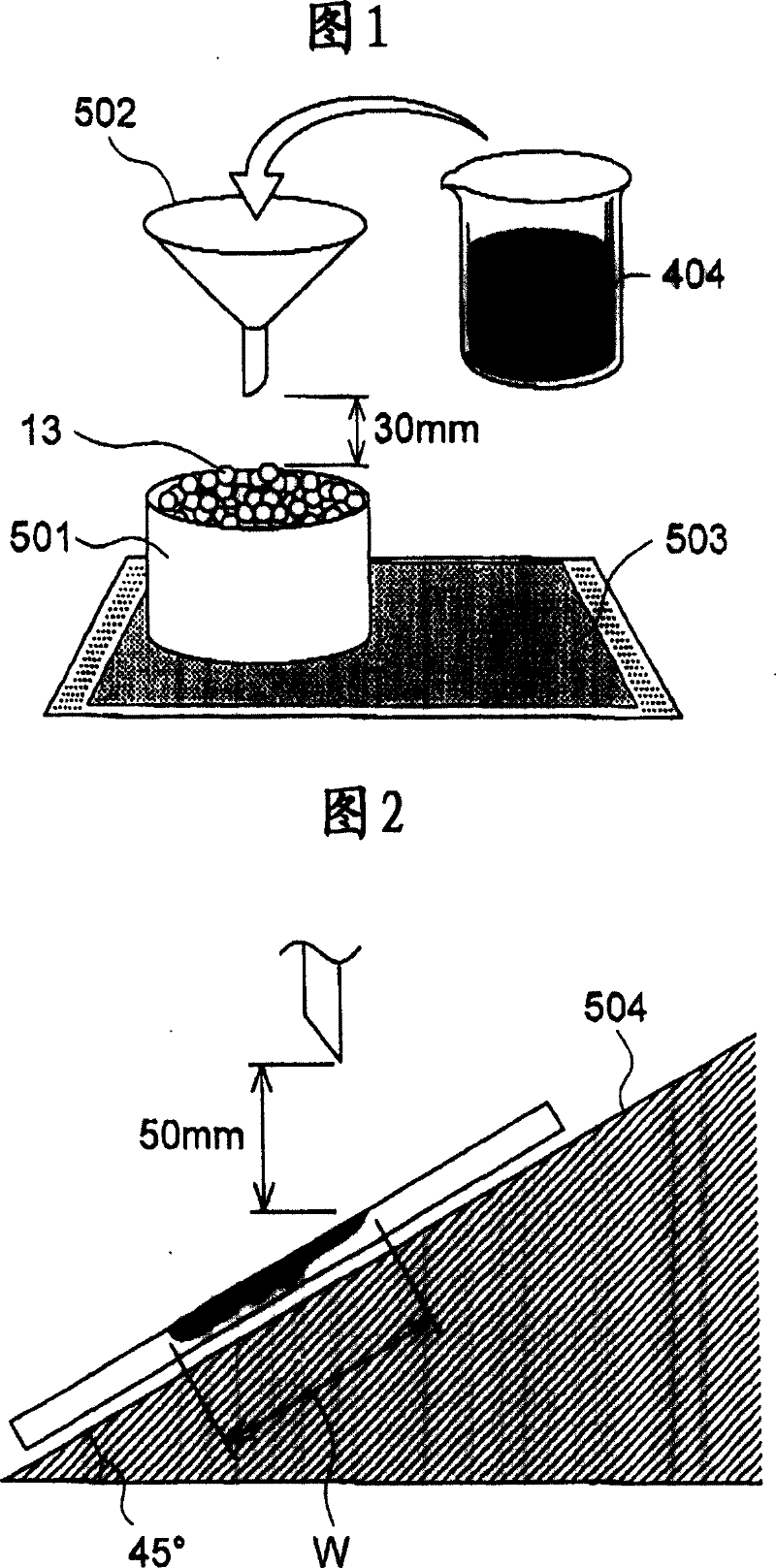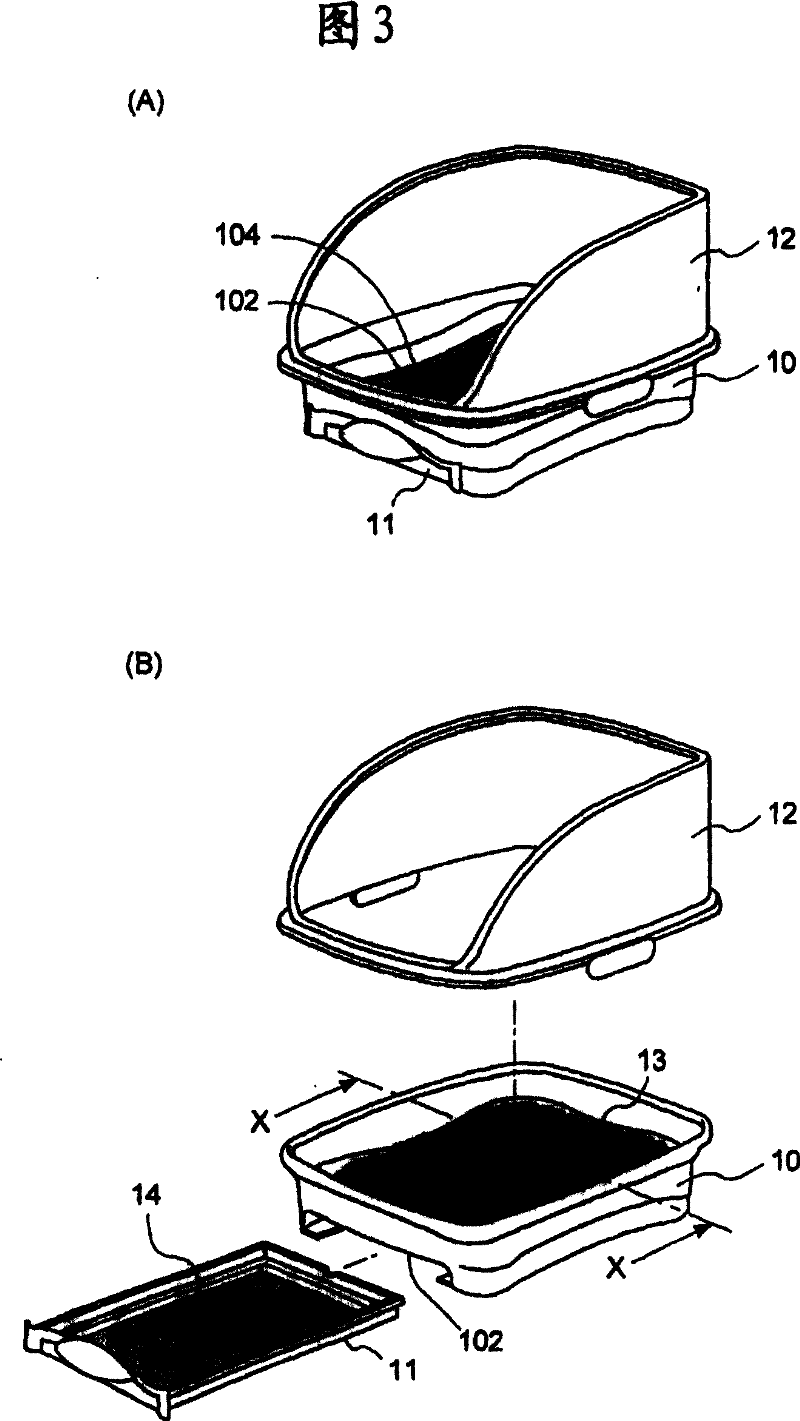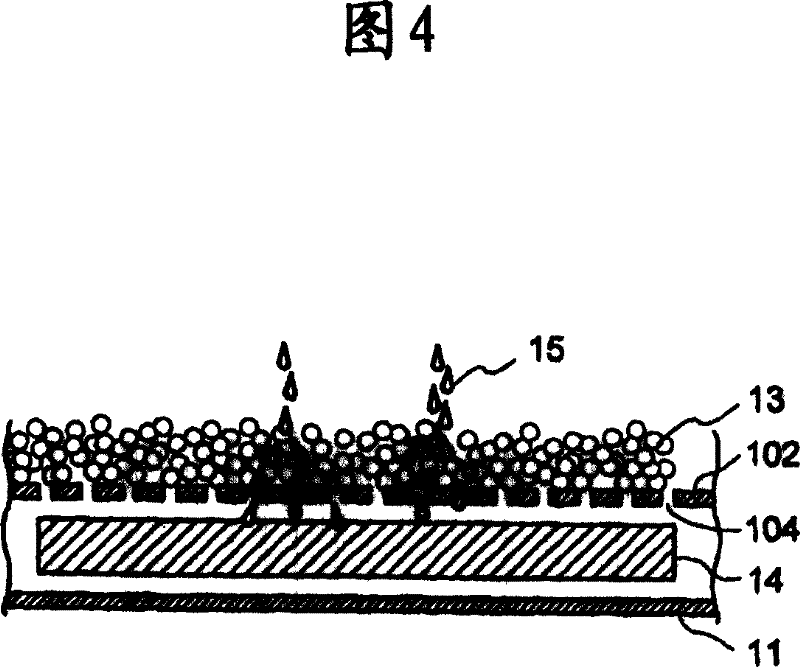Animal litter
A technology for sanitary sand and animals, which can be used in animal houses, animal taming devices, applications, etc. It can solve the problems of fecal odor residue, foul smell, unhygienic, etc., and achieve economical cleaning time, prevent foul smell, and clean The effect of less effort
- Summary
- Abstract
- Description
- Claims
- Application Information
AI Technical Summary
Problems solved by technology
Method used
Image
Examples
Embodiment
[0068] Liquid passing experiments were carried out using the sanitary sand of the present invention. Experimental methods are described below. First, the sanitation sand of the present invention (sample 1), the commercially available sanitation sand (sample 2) and the sanitation sand (sample 3) whose surface is all hydrophobic are successively covered in a computing container with a depth of 30 mm. Next, the grate-shaped container containing the above-mentioned substance to be tested is placed on a pet mat whose weight has been measured in advance. Next, 20 cc of physiological saline was dripped over a period of about 10 seconds from a height of about 30 mm. After standing for about 15 seconds, the weight of the pet mat after absorbing water was measured. Calculate the liquid throughput.
[0069] The results are shown in Table 1. It can be seen from Table 1 that the liquid throughput of sample 1 and sample 3 increased by about 5% compared with sample 2, but the water dropl...
PUM
 Login to View More
Login to View More Abstract
Description
Claims
Application Information
 Login to View More
Login to View More - R&D
- Intellectual Property
- Life Sciences
- Materials
- Tech Scout
- Unparalleled Data Quality
- Higher Quality Content
- 60% Fewer Hallucinations
Browse by: Latest US Patents, China's latest patents, Technical Efficacy Thesaurus, Application Domain, Technology Topic, Popular Technical Reports.
© 2025 PatSnap. All rights reserved.Legal|Privacy policy|Modern Slavery Act Transparency Statement|Sitemap|About US| Contact US: help@patsnap.com



